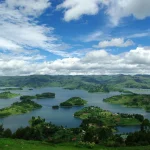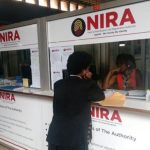Cultural sites in Uganda include historical buildings, town sites, archaeological sites, monument sculptures and paintings. Uganda has got a number of cultural sites that cannot be missed on your Uganda safari. The locals in Uganda are known for being hospitable. This is because the country has various tribes all with different backgrounds.
Uganda is strong in cultural heritage and this is demonstrated by numerous cultural sites and tribes within the country. Each tribe has its own language, norms and cultural practices. Some have traditional kings and others have chiefs as heads. In 1967 in the new republican constitution kingdoms and chiefdoms were abolished in Uganda. This was because they wielded much power and influence on locals which then president Apollo Milton Obote did not agree with.
Later when president Museveni came to power, kingdoms were restored. The most cultural encounters in Uganda include the Ik and Karamojong people living in northwestern Uganda, the Batwa in Mgahinga and Bwindi Impenetrable National park and the Bamasaba around Mount Elgon National park. These tribes are still known for keeping their culture in an authentic way.
The Batwa trail involves visiting the Batwa however that of Mgahinga is different from the one in Bwindi forest. The Batwa were evicted from Mgahinga forest so as to create room for mountain gorillas. Visitors get a chance to learn about their ancient practices. For instance; hunting, food gathering, traditional medication and it has been hard for this tribe to adapt to life outside forest.
The Ik people are the smallest tribe in Uganda with less than 10000 people. They lived in Kidepo valley National park and were displaced when the park was founded. The Ik are known for chasing out their kids out of their parents home when they are around 3-4 years.
The Karamojong are pastoralists and have interesting cultural practices. Unlike their neighbors, Karamojong keep their kids for as long as possible. Visiting them takes you through the traditional dances, local art pieces and milking cows.
Some of cultural sites in Uganda
Kasubi tombs
The tombs are main treasures of Buganda Kingdom and a leading cultural site in Uganda. Kasubi tombs were recognized as UNESCO World Heritage sites in 2001 and the site is protected by Buganda tourism board. The tombs are the burial grounds of four kings of Buganda which include; Mutesa I, Mwanga II, Daudi Chwa and Mutesa II. In 2010 the tombs were destroyed by fire and were closed but renovations have been taking place and the site is now open. Kasubi tombs are located 5 kilometers away from Kampala city center on Kasubi hill.
Kabaka’s lake
The lake is found in Ndeeba near the Kabaka’s palace covering an area of 5 hectares. It was created in 1880 by Kabaka Mwanga II as an escape route to lake Victoria. However he failed to achieve his goal of creating a channel lake Victoria. During his reign he used to swim and practice finishing on this lake. The lake is a home to various birds and wildlife. Other tourist activities that can be done at Kabaka’s lake include; spot fishing and swimming.
Nakayima tree
 It is said to be one of the strongest and oldest trees in existence today with large and strong buttresses. Nakayima tree is claimed to have been planted by Nakayima who was a wife to Ndahura. Ndahura was the first Bachwezi empire ruler 400 years back. People go to this tree to seek blessings from the gods. The witch doctors are always around the main shrine meditating and communicating to spirits. Nakayima tree is located in Mubende district. The site can be visited on your way to Kibale National park.
It is said to be one of the strongest and oldest trees in existence today with large and strong buttresses. Nakayima tree is claimed to have been planted by Nakayima who was a wife to Ndahura. Ndahura was the first Bachwezi empire ruler 400 years back. People go to this tree to seek blessings from the gods. The witch doctors are always around the main shrine meditating and communicating to spirits. Nakayima tree is located in Mubende district. The site can be visited on your way to Kibale National park.
Ssezibwa falls
Ssezibwa falls is a cultural heritage site of the Buganda kingdom located in Kayunga district between Kyagwe and Bugerere counties. The site is 20 miles along Kampala- Jinja highway. These waterfalls are important both culturally and spiritually in Buganda. People visit this place to seek blessings from the gods. All kings of Buganda it’s a must to visit this place. Ssezibwa falls has transferred into a popular tourism destination with natural and cultural experience. Some of these activities that can be done include; birding, rock climbing, camping, primates viewing among others.
Karambi tombs
The tombs are located 4 km south of fort portal city along Fort Portal- Kasese highway. The Karambi tombs are the most valued tombs in the Tooro kingdom because they are the burial grounds of the three kings. These kings included Omukama Kyebambe Kamurasi, Olumi Kaboyo II and Rukidi III. Each of these kings has a separate tomb as well as other family members. With the help of the local guide he will help you to have a look at the tombs , spears and royal drums. In the courtyard there is a cemetery where the princes, princesses and other royal members were buried. However this site was abandoned some time back but there are plans of renovating it and making it a modern tourism destination. There are plans of making it a museum of the Tooro kingdom. Due to Karambi tomb’s strategic location one can visit other tourism destinations. For instance, Kibale National park, Amabeere Ganyina mwiru caves and the Tooro kingdom.
Bigo bya Mugenyi
It is a UNESCO world heritage site located in Ntusi sub- county, Sembabule district. Bigo bya Mugenya covers an area of 10 sq kms. The earthworks are believed to be associated with the Bachwezi oral traditional. These traditional involve the introduction of long horned cattle which dominated the grate region. The site is believed to be where the Bachwezi demi gods Ndahura and Wamala lived 100 years ago. They left many earthworks and artifacts which were made in the 14th and 16th century and are useful to the local people. People visiting this place are told to first wash themselves in the nearby stream before entering. This is done so as not to annoy the gods at Bigo bya Mugenyi. However, the place is remote and roads are dusty and in the rainy season are muddy.
Uganda museum
The museum is located on Kitante hill Kampala Uganda. Uganda museum was built with an aim of preserving and teaching about Uganda’s history and cultural heritage. It was founded in 1908 after Governor Gorge Wilson called for collection of all artifacts, instruments and articles about Uganda. Among the collections included hunting weapons, musical instruments, archaeology, weaponry and entomology. These tools were used to demonstrate what Uganda was and is.
The museum has a number of galleries for instance; traditional music, early history, natural history, ethnography, and science and industry. At the back of Uganda museum there is a cultural village full of huts demonstrating the traditional lifestyle of the people in Uganda. Visitors who want to experience the indigenous ways of the Ugandans can take a tour in these huts. These houses include; Ankole, Bamba, Kigezi, Batooro, Bunyoro, Teso, Bugisu, Buganda, among others. Within these huts there is an array of cultural materials. For instance; horn work, leather works, milk pots (ebyanzi), cutlery, bead work, ceramics, gourd vessels and basketry.
Fort patiko
The fort is located 30 kms away from Gulu city in Patiko sub county. Fort Patiko is also known as Baker’s fort. This facility was built by Arabs but later was taken by Samuel Baker and transformed into a military fort in 1872. This was done so as to frustrate the Arabs who had used this facility to collect slaves. Later in 1888 the fort was taken over by Emin Pasha and Charles Gordon who were Governor of the Equatorial Province of the British in Uganda. The fort reminds Ugandans the evils of slavery with the dark marks around the stones which is believed to be the blood of those slaves who couldn’t manage to make it to Egypt. The government of Uganda is planning on turning this fort to become a national tourism site.
Mparo tombs
The tombs are located 4 kms away from Hoima city in Mparo division along Hoima Masindi highway western Uganda. Mparo tombs are burial grounds of Omukama Kabalega II, kings and the royals of the Bunyoro Kitara kingdom. The remains of Omukama Kabalega are kept in a mausoleum and covered with a back cloth and also other tombs in the place are covered with the back cloth and other cultural belongings of the respective kings.
 Mparo tombs also have ancient instruments like; baskets, sticks, spears, drums, wooden stools, shields, coffee berries, clay pots, smoking pipes, milk and water containers. The tombs also have iron spears, flutes,cone-shaped crowns and necklaces and bronze that were obtained from the Chwezi and Babito dynasties. People that visit this site always perform cultural rituals like paying a homage to former kings tombs and pray for blessings and inspirations from the spirits. Also visitors are not allowed to enter with shoes and should not have engaged in the extramarital affairs the night before visit. Women and girls in their menstruation period are not allowed to enter this place and before one has to confess his or her sins.
Mparo tombs also have ancient instruments like; baskets, sticks, spears, drums, wooden stools, shields, coffee berries, clay pots, smoking pipes, milk and water containers. The tombs also have iron spears, flutes,cone-shaped crowns and necklaces and bronze that were obtained from the Chwezi and Babito dynasties. People that visit this site always perform cultural rituals like paying a homage to former kings tombs and pray for blessings and inspirations from the spirits. Also visitors are not allowed to enter with shoes and should not have engaged in the extramarital affairs the night before visit. Women and girls in their menstruation period are not allowed to enter this place and before one has to confess his or her sins.
Baha’i Temple
The temple is located at Kikaya hill 4 miles from Kampala city. It is a spiritual home for the Baha’i faith and built on a 30- hectare piece of land. Baha’i temple was opened to the public in January 1962 the same year Uganda got its independence. The Baha’i temple was built in the form of a dome with gardens where people go for relaxation and meditation. The place welcomes everyone regardless of the religion and background. However, those that visit the place should respect the Baha’i principles during the tour and acts of immorality are forbidden in this place.
Kings palace and Bulange in Mengo
The Mengo palace(Lubiri) has been in existence since 1885 as an official residence of the kings of Buganda. It was started by Daniel Mwanga II who was Mutesa I’s son and built by king Daudi Chwa in 1887. However in 1966 during the military coup the palace’s subterranean storage tunnels were used to keep the political prisoners. Later the place was restored and all chambers are in place. The current king does not use this palace ever since his father Mutesa II was attacked by the government forces in this palace. The Bulange is the official administrative building of the Buganda kingdom. The building is located on Namirembe hill near Namirembe hospital northwest of Mengo palace. Both the palace and the parliament are along the Kabaka Njagala road, also referred to as the royal mile. The kabaka and prime minister of Buganda maintain offices in this building. Visitors are allowed to visit during weekdays and also have the opportunity to attend the parliamentary sessions.
Ndere cultural center
This center is located in Ntinda and was founded in 1984 by Rwangezi Stephen as a cultural organization. Ndere cultural center was initiated with the aim of universal unity through music, dance and drama from the Ndere troupe center. The name Ndere means flute in English and was chosen as a symbol of beauty as it produces a beautiful sound that can express a range of emotions from sorrow to joy and love. The organization has over 1600 Uganda development theater groups that entertain and educate people through their performances. Apart from performances, visitors also enjoy traditional meals from different parts of the country.
Uganda Cathedrals
Saint paul’s cathedral Namirembe also known as Namirembe cathedral is one of the oldest churches in Uganda built in 1903. The cathedral is located on Namirembe hill in Rubaga division 2 km west of Kampala central business center. Namirembe provincial cathedral of Anglican faith in Uganda. Another sacred place is the Rubaga cathedral which was constructed in 1880 and it belongs to the Roman catholic faith. Both of these cathedrals hold offices of the two christian denominations. These churches are always full during Sunday masses and within the courtyards there are tombs of their former priests.
Uganda martyrs shrine (Namugongo)
The Namugongo martyrs shrine is one the largest christian visited destinations in Africa. Every 3rd of June many people come from different parts of the world to commemorate the death of 22 martyrs and saints of Uganda who were martyred between 1885 and 1887 by Kabaka Mwanga, king of Buganda. The kabaka ordered the killing of many christians whom he felt had stopped respecting him after converting to christianity. June 3rd is declared a public holiday in Uganda as both Catholics and Protestants go to their respective shrines in Namugongo. The shrines are located in Namugongo, Kira municipality 15 km away from Kampala.
Igongo cultural center
The cultural center is located 12 km away from Mbarara along Mbarara- Masaka highway. Igongo cultural center is built on the grounds of the former palace of the Ankole kingdom. The center offers a glimpse into the culture of people from western Uganda. Igongo has a museum, craftshop, cultural village, the Mpororo courts where one can explore the artifacts of the 18th century Ankole kingdom. Visitors can also buy books about Uganda and the local tribes of western Uganda. Igongo is also a stopover to tourists going to Bwindi Impenetrable, Mgahinga and Queen Elizabeth national park.
Nkokonjeru tombs
The tombs are the burial grounds of the remains of the last two kings of Ankole kingdom that is to say; Omugabe Edward solomon Kahaya II, George Rutahaba Gasyonga II. There are also other tombs of the other royal family members. The land where these tombs are is said to have been sold by Prince John Barigye after being refused to be crowned as a king. The site has been abandoned except the cattle grazers who have been encroaching it and it has now been refurbished.








